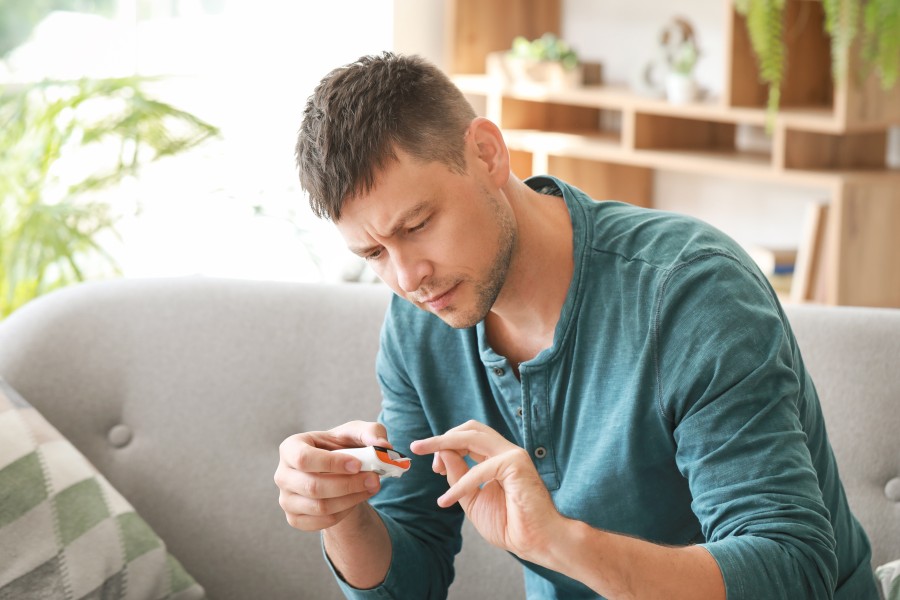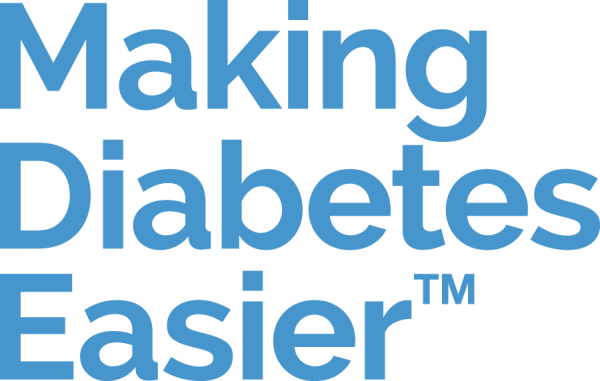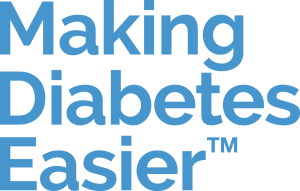Hypoglycaemia: treatment, diagnosis and prevention

Hypoglycaemia: treatment, diagnosis and prevention
Hypoglycaemia, or low blood glucose, occurs when your blood glucose levels drop to a point that may cause you harm [1, 2].
Hypoglycaemia is common in people with type 1 diabetes and among people with type 2 diabetes who take insulin or some other diabetes medicines [2].In one large global study of people with diabetes who take insulin, 4 in 5 people with type 1 diabetes and nearly half of those with type 2 diabetes reported a hypoglycaemic event at least once over a one-month period [2].
Hypoglycaemia causes problems that can sometimes be serious [1], but the good news is that there are things you can do to recognise, prevent and treat hypoglycaemia episodes (also called hypos) [1, 2, 3].
Recognising hypoglycaemia
Different people may have different symptoms of low blood glucose [3]. Learning to recognise your own symptoms can help you spot a hypo early on [3].
It may be a good idea to write down the symptoms that are common for you so you can recognise them more easily [3].
Noticing the signs
Common symptoms of mild-to-moderate hypoglycaemia include, but are not limited to [2, 3, 4]:
- Shakiness
- Hunger
- Tiredness
- Irritability
- Rapid or unsteady heartbeat
- Confusion
- Dizziness or lightheadedness
- Blurry vision
- Headache
For a full list of potential symptoms, you can read our hypoglycaemia symptoms and causes guide.
Check your blood glucose levels
If you are experiencing the above symptoms, you should check your blood glucose levels [3]. This is the only way to know for sure if you are experiencing hypoglycaemia [3].
Hypoglycaemia is usually considered to occur when blood glucose drops below 3.9 mmol/L (70 mg/dL) [1]. However, this threshold may be different for you [3]. Speak to your healthcare team to establish the level that is too low for you [3].
If you cannot check your blood glucose for whatever reason, you should treat the episode regardless, as if it was a hypo, and then test when possible [1, 3].
Hypo treatment: how to treat a hypo yourself

Hypo treatment: how to treat a hypo yourself
To treat a hypoglycaemia episode yourself, you can follow the ‘15-15’ rule [3]:
- Have 15 grams of carbohydrate (carbs) to raise your blood glucose levels, wait for 15 minutes and then check it again [3].
- If your blood glucose is still low, repeat step 1 [2, 3].
- Test your blood glucose levels again [2].
- Repeat the steps above until your blood glucose is back to at least 3.9 mmol/L (70 mg/dL) or your target range [2, 3].
If you can’t test immediately for any reason or you have concerns about hypoglycaemia, it is best to treat first and check when possible [1].
What carbs to have
You can eat or drink your carbs [2]. Examples of 15–20 grams of carbohydrate include:
- Four glucose tablets [2]
- One tube of glucose gel [2]
- Half a cup of fruit juice [2]. This should not be a low-calorie, diet, or low-sugar option [2, 3]
- Half a can of sugary fizzy drink — again, not low-calorie or reduced sugar [2]
- One tablespoon of sugar or honey [2]
- Hard candies or jelly beans (see food label for how many are needed for 15 grams of carbs) [3]
Notes and special precautions
If you have kidney disease, you should avoid orange juice, as it contains a lot of potassium [2]. Apple, grape, or cranberry juice are great alternatives [2].
Complex carbs, or foods that contain fats along with carbs such as chocolate, should be avoided as a treatment because they can slow down the absorption of glucose [3].
If you have type 2 diabetes, you should avoid using sources of carbs that are also high in protein to prevent hypoglycaemia [4]. These may increase the body’s insulin response and might not raise your blood glucose [4].
You may be tempted to eat as much as possible until you feel better [3]. However, this may cause your blood glucose to spike [3]. Instead, following the steps of the 15-15 rule above can help keep your blood glucose in range [3].
After having a hypo
Once your blood glucose is back in range, eat a meal or a snack to avoid it dropping again [3, 4]. If your next meal is more than an hour away, have a snack instead [2]. This could be crackers or a piece of fruit [2].
Once your hypo passes, you can resume your normal activities [1].
If you had severe hypoglycaemia and needed glucagon (which we cover in the section below), you should let your healthcare professional know [1, 3]. They may want to change your blood glucose target to avoid future hypos, or consider using a continuous glucose monitor (CGM) to help prevent hypos from recurring [1].
It is worth noting that after a hypo, you may be less sensitive to the early symptoms of another hypo for 48–72 hours [1]. This could make you less likely to notice the signs of a hypo and more prone to another episode [1]. During this time, you should check your blood glucose more regularly [1].
Emergency hypo treatment
If a hypo is not treated and blood glucose levels continue to drop, the brain doesn’t get enough glucose and may stop working as it should [3]. If the brain is deprived of glucose for too long, you may experience [2, 3]:
- Seizures [3]
- Loss of consciousness (passing out) [2]
- Coma [3]
- Death (very rarely) [3]
If you have a hypo that is not treated and you end up needing help to recover, like in the case of a seizure or passing out, this is considered severe hypoglycaemia [3].
How to treat severe hypos: glucagon
You should instruct people you are in frequent contact with — such as friends, family or colleagues — on what to do to help you in the event of severe hypoglycaemia [3]. Severe hypos are treated with glucagon — a hormone that stimulates your liver to change its stored reserves of glycogen into glucose [3, 5]. The glucose is then released into your bloodstream, causing your blood glucose levels to rise [3, 5].
Glucagon is used when blood glucose is too low to treat with the 15–15 rule [3]. This may mean that you have lost consciousness [5].
Glucagon is available by prescription and is typically either injected or administered [3].
You should speak to your doctor about whether you should get glucagon and, if so, when and how to take it [3].
The glucagon injection kit
Injectable glucagon is available with a prescription [3, 5]. It may be sold as an injection kit or as a pre-mixed auto-injector pen, that is ready to use [3, 5].
The glucagon injection kit usually contains glucagon in the form of powder and a solvent that you need to mix it with [5].
The kit or auto-injector will contain a patient information leaflet with instructions on how to use the injection device [5].
The person who is helping you does not need to be a medical professional to administer the injection [4]. Family members, people you work with or close friends who may need to help you in the case of a severe episode should be instructed on how to use glucagon [3, 5].
Receiving glucagon when you are unconscious
If you are unconscious, the person who helps you should place you in the recovery position (lying on your side) [1]. This is to prevent choking in case you experience nausea and vomiting when you regain consciousness [1, 3].
Glucagon can be given under the skin or into a muscle [5]. Follow the kit instructions to administer the injection in either of the following areas [3]:
- Buttocks
- Arms
- Thigh
People usually respond to glucagon and regain consciousness in 5–15 minutes [3].
Once they are awake and able to swallow, they should be given a source of fast-acting sugar like fruit juice to stop the low blood glucose episode from happening again [5]. Follow this with a source of long-acting sugar, such as cheese or crackers [5].
After using glucagon, you or someone else must contact your doctor or a healthcare provider [3]. You will need to discuss how to avoid severe hypoglycaemia in the future [3].
Emergency care services
You should never hesitate to call the emergency medical number in your country or ask someone to do it for you if you are concerned [1].
The person who looks after you during a severe hypo should call the emergency number for you in the following situations [1]:
- You have lost consciousness and you have no glucagon available [1]
- Glucagon is available, but the person with you does not know how to use it [3]
- You had the treatment, but your blood glucose continues to be very low 20 minutes after or doesn’t respond to treatment as usual [1]
- You need a second dose of glucagon [1]
- You had the treatment but still feel confused [1]
If the person does not respond to the injection after 10 to 15 minutes, they should receive another dose [1].
A medical professional can give you glucagon straight into your vein [1]. This will cause your blood glucose to rise right away [1].
Preventing hypos
The best thing you can do to prevent hypos is to manage your diabetes well and train yourself to notice the early signs of a hypo before it gets worse [3].
Checking your blood glucose
Blood glucose monitoring is a proven method for preventing hypos — the more a person checks their blood glucose, the lower their risk of hypoglycaemia [3]. This is because testing allows you to see when your blood glucose is declining, and it enables you to treat it before it gets worse [3].
If possible, it is recommended to check your blood glucose [3]:
- Before and after meals
- Before and after exercise
- Before bedtime
- During the night (after intense exercise)
If your routine or schedule has changed, for example, due to a new job, you are exercising more, or you are travelling across different time zones, you should check your blood glucose more often than usual [3].
Other tips for hypoglycaemia prevention
Understanding the situations that increase your risk of hypos is essential to preventing them [4]. This could be [4]:
- When fasting
- When your meals are delayed
- During and after you consume alcohol
- During and after you exercise
- During sleep
There are things you can do to prevent hypos in these situations, such as [2]:
- Make sure you include meals, snacks, and drinks with enough carbs into your diet that can keep your blood glucose within range [2]
- Carry fast-acting carbs with you, such as glucose tablets or juice [2]
- If you drink alcohol, it’s less risky to have it with food at the same time [2]
- Check your blood glucose before, during, and after exercise and adjust your carbs intake or insulin therapy accordingly [2]. For example, you may have to eat a snack before exercise [2]
Speak to your healthcare team about adjusting your diabetes management plan and other steps you can take to prevent hypos [2]
Hypoglycaemia is common among people with type 1 diabetes and among those with type 2 diabetes who take insulin or other diabetes medicine [2].
To help manage your diabetes and prevent hypos, test your blood glucose levels as often as possible and learn to recognise the symptoms [1, 3]. You can also learn how to treat your hypos yourself [3].
Severe hypos can be serious [3], but they can also be prevented and treated [3]. Learning strategies and tips for prevention may help you avoid severe hypos and stay on top of your diabetes [3].
You should never be afraid to call the emergency number in your country or ask someone to do it for you if you are worried about a severe hypo [1].
Sources:
- Juvenile Diabetes Research Foundation (JDRF), Low Blood Sugar: Symptoms, Causes, and Treatment for Hypoglycemia, accessed 13/07/2022, available at https://www.jdrf.org/t1d-resources/about/symptoms/blood-sugar/low/
- National Institute of Diabetes and Digestive and Kidney Diseases (NIDDK), Low Blood Glucose (Hypoglycemia). Accessed July 2022. Available at: https://www.niddk.nih.gov/health-information/diabetes/overview/preventing-problems/low-blood-glucose-hypoglycemia#causes
- American Diabetes Association (ADA), Hypoglycemia (Low Blood Glucose). Accessed July 2022. Available at: https://www.diabetes.org/healthy-living/medication-treatments/blood-glucose-testing-and-control/hypoglycemia
- American Diabetes Association; 6. Glycemic Targets: Standards of Medical Care in Diabetes—2019. Diabetes Care 1 January 2019; 42 (Supplement_1): S61–S70. https://doi.org/10.2337/dc19-S006
- MedlinePlus, Glucagon Injection. NIH National Library of Medicine, Accessed September 2022. Available at: https://medlineplus.gov/druginfo/meds/a682480.html

